Model Yacht Building


Introduction: Model Yacht Building
Model yacht building is a wonderful hobby for boaters who like the many different designs available for full scale yachts that can be made by several techniques. I started carving models of my ideas of boats at the tender age of 9 or 10. With a drawn knife, auger and bits, hammer and chisel, I made beautiful hull shapes emerge out of blocks of soft white pine. It was great fun. At age 11, I was given a Craftsman vibrating jig saw with 5" blades cut plywood frames and then planked them with strips of white pine. One of my first big models was of a Southbay Shore Bird. Its plans were found in "Sailing Craft" by Andrew Schoettle which has many other boat plans that I built from including the Larchmont "O" Boats. Uffa Fox published at leasst 4 large volumes of classic yacht plans with excellent descriptions of their characteristics which was wonderful reading to give me the feel of how things were done in those times. See my website at www.angelfire.com/fl/modelyachts and follow some of the links to learn more about what fun I have had over the years building models of boats I have owned or wished I had owned. I receive e-mails about once per month from those wanting the plans or frames I cut on my Ryobi 9" bandsaw with a 1/8" blade. My favorite yacht modle is the International One-Design 48" model of the full scale 33' 5" yacht class of that name started by the late Cornelius Shields of Larchmont Y.C., Larchmont, NY. I owned his famous "Aileen", IOD 25 which was his first boat of the class in 1935. I restored her in my backyard in Rye, NY and raced her in the Long Island Sound Fleet from 1972 to 1976. Upon retiring to Sarasota, FL in 1994, I started the IOD 48" Class of Vintage Model Yachts. Over 35 fiberglass hulls were made from my mold. I finished 6 models for others and have two on hand for match races in my backyard pond when visitors are interested. The keels had to be 3" deeper than to scale to achieve the stability for a model. They handle just like are real IOD. I started seriously building scale models while at Penn State in 1948 from "Your New Boat" a book by Yachting Editors that had many plans of popular boats of the times. One of my first models was a 36" model of the IOD. I hope whomever owns that model now will offer it back to me for sale. I still have a number of my first models of the Comet, Star, Snipe, Hampton, Blue Jay and Atlantic. I have built full scale Star and Jet 14 Class boats. Now, I have restired a 1970's Irwin 23 #24 to almost new condition. I extended the mast to carry a Star Class mainsail in light airs. The Irwin 23 is like a smaller version of the Pearson Ariel 25' 6" Class that I owned for 10 years. I founded the Ariel-Commander YRA which still flourishes in the San Francisco Bay Area. See my web site at www.angelfire.com/fl4/mft for photos of the Irwin 23 and links to other boats I have owned. Go to www.webshots.com for photos and slideshows of my boats by searching for "Thrasher's Boats". Click on some of the images to go to the slideshows. Join the AMYA at www.amya.org and follow the links to Vintage Model Yachts. There is a large group involved in building large model yachts like my 73" Vanja that had plans published by Popular Mechanics in 1936. I offer copies of Vanja and IOD 48" plans on my websites. I have fiberglass molds for the Vanja 73" and IOD 48". I have made 4 Vanja hulls and will make more for those who are interested in fiberglass copies. Many have ordered the Vanja plans to build from scratch. I have not yet seen finished scratch built Vanaja results from those for whom I made sets of frames. Some IOD 48" model builders have provided excellent photos of their boats which I plan to show on these pages. Stay tuned as I develop Model Yacht Building Instructables as the spirit moves. Sincerely, Milton Thrasher 941 966-9172 or 941 966-9179 for answering machine 4258 Hearthstone Drive Sarasota, FL 34238 [email protected] www.angelfire.com/fl4/mft www.angelfire.com/fl/modelyachts www.angelfire.com/fl5/mft
Step 1: Laser Cut Frames and Decks for Model Boats
Irwin Schuster, Secretary of the Tampa Bay Ship Model Society, ([email protected]) has laid out the IOD frames and decking for laser cutting. I offer them in various sizes on my web site at www.angelfire.com/fl4/mft The smaller sizes (13, 18 and 24) are true to scale. The larger sizes (33.4, 36 and 48) have deeper keels by 3" than the original plans so that they can be sailed by radio control.
Step 2: Solid Models
The best way to make solid models is by the bread and butter method. That is to make layers of wood that conform to the water line levels that as shown on the plans of the boats. They are glued together and then carved to shape. That saves a lot of effort compared to working with a solid block of wood. I offer templates for the layers which are called "lifts" that can be made any size on a copier. Small half models are very easy to make by use of templates. I cut a plexiglass profile and deck of the model on a band saw. I attach these to the lifts for the half model to prevent cutting too deeply when shaping the hull. This allows me to use a sanding machine with very rough grit without fear of cutting below the template.
Recommendations

Make it Resilient

Remake It - Autodesk Design & Make - Student Contest

Engineering in the Kitchen - Autodesk Design & Make - Student Contest

- PRO Courses Guides New Tech Help Pro Expert Videos About wikiHow Pro Upgrade Sign In
- EDIT Edit this Article
- EXPLORE Tech Help Pro About Us Random Article Quizzes Request a New Article Community Dashboard This Or That Game Popular Categories Arts and Entertainment Artwork Books Movies Computers and Electronics Computers Phone Skills Technology Hacks Health Men's Health Mental Health Women's Health Relationships Dating Love Relationship Issues Hobbies and Crafts Crafts Drawing Games Education & Communication Communication Skills Personal Development Studying Personal Care and Style Fashion Hair Care Personal Hygiene Youth Personal Care School Stuff Dating All Categories Arts and Entertainment Finance and Business Home and Garden Relationship Quizzes Cars & Other Vehicles Food and Entertaining Personal Care and Style Sports and Fitness Computers and Electronics Health Pets and Animals Travel Education & Communication Hobbies and Crafts Philosophy and Religion Work World Family Life Holidays and Traditions Relationships Youth
- Browse Articles
- Learn Something New
- Quizzes Hot
- This Or That Game New
- Train Your Brain
- Explore More
- Support wikiHow
- About wikiHow
- Log in / Sign up
- Hobbies and Crafts
- Model Making
How to Build a Model Ship
Last Updated: January 22, 2024 References
This article was co-authored by wikiHow Staff . Our trained team of editors and researchers validate articles for accuracy and comprehensiveness. wikiHow's Content Management Team carefully monitors the work from our editorial staff to ensure that each article is backed by trusted research and meets our high quality standards. This article has been viewed 245,608 times. Learn more...
Model ship building is an interesting hobby that many people enjoy. It can be a lot of fun to see your model ship come together as you build it. Most model ships are accurate representations of actual ships and even share some things in common with their construction processes. If you've never built a model ship before, don't worry. There are plenty of model kits that have all the pieces you'll need to build your own model ship.
Buying a Model Boat Kit

- Your local hobby shops will likely have model boat kits available to buy.
- Many on-line hobby shops can send a model boat kit to your home.
- There are many different model boat kit styles that you can buy. Many of these will have a differing levels of difficulty and challenge.
- If this is your first time building a model boat, try to select a simple model for beginners.
- Do some research on the type of boat you are building to help you get an idea of what it will look like when finished. [1] X Research source

- You will likely want a wood plane or sandpaper.
- Small pliers can help when assembling the model.
- You may find a complete ship model tool kit that will provide everything you need to get started.

- Each model boat will have its own instructions.
- Always consult your instruction manual every step.
Building the Body of a Model Ship

- Make sure all the parts are accounted for.
- Make sure none of the parts are damaged.
- Find your instructions manual and review it.
- You may need additional tools or materials. Check your instructions to see if you need to buy anything else before getting started.
- Slide the bulkhead frames into the keel. The keel will be the long piece of the frame, running the length of the boat. The bulkheads will slide into slots found on the keel. Bulkheads will help shape the planks of your boat when it's time to apply them.
- Once you're sure everything fits, you can glue the bulkhead frames into the keel.
- Make sure everything is level and flat on the top of the frame. If any bulkheads or areas of the keel are higher than others, use sandpaper to level them off.

- Place a plank over the bulkheads.
- If there is a space where the plank doesn't touch a bulkhead, sand the bulkheads down until the plank rests flatly against each bulkhead.
- Take your time and make sure each plank will lay flatly against the bulkheads.
- Make sure to test both sides of the bulkheads.
- If you sand one area down too much, you can add tiny slivers of wood later on to level off the plank.

- You will likely place the first plank at deck level.
- Planks run the length of the boat, from fore to aft.
- Each plank will be glued to the bulkheads that it is meant to touch.
- Check your model's instructions to learn where you should place your first plank.
- Add planks in pairs to ensure they are even and level with one another. Your first planks should mirror images of one another.
- Soaking planks in water can help them become more flexible.
- If there are any gaps, you can use wood filler or small pieces of wood to fill them in.
- Your model may have you add additional layers of planking. Follow your model's unique instructions when adding planks to ensure the best results.
- Additional layers of planking are often decorative.
- You may need to taper some planks to close up gaps.

- Your model boat's hull should look completely smooth after sanding it.
- Each plank will look like it was naturally blended or attached to the next.
- No one plank should stick out further than another.
- Double check your model before adding any finishing touches.
- You may need to use wood filler or small pieces of wood to make the deck piece lay level.
- Take a moment to sand down any rough areas that you might notice.
- Your model will likely have specific instructions for attaching the deck piece. Always check your instructions to make sure your model will be successfully completed.
Finishing the Model Boat

- Most wooden model boats will require some kind of wood stain and sealant to protect the wood.
- Some models can be decoratively painted to look like their real life counter parts.
- Matte or stain polyurethane finishes can be a great addition to your model boat.
- Figurehead.
- The boat's wheel.
- Quarterdeck.

- You can buy model boat displays at many hobby stores.
- You shouldn't have any leftover parts from your model. If you do, try to figure out where it was supposed to go and add it if possible.
- Be careful with your finished model boat as it will be fragile.
Community Q&A
- You could also try buying a plastic kit. Most plastic kits come with pre-made sections that can be snapped or glued together easily. Thanks Helpful 0 Not Helpful 0
- Don't be in a rush to assemble your model boat. Take your time with each step to make sure everything is correct. Thanks Helpful 1 Not Helpful 0
- All models will have their own instructions. Try to follow these as closely as you can to ensure great results. Thanks Helpful 0 Not Helpful 0

Things You'll Need
- A model boat kit of your choosing.
- Tools required by the kit.
- A clean and well lit space to build the model in.
You Might Also Like

- ↑ http://www.intothings.com/reality.html
- ↑ https://www.youtube.com/watch?v=GulqnmgkPpQ
- ↑ https://daveifm.wordpress.com/
- ↑ http://www.building-model-boats.com/boat-hull-design.html
- ↑ https://www.youtube.com/watch?v=bSyVTYBwOmc
- Videos provided by Gary Brinker
About This Article

If you want to build a model ship, buy a boat kit that will have all of the pieces you’ll need for your new hobby. Most kits require some basic tools to assemble, like a wood plane or sander and small pliers, so make sure to check the requirements before you start building. When you’re ready to start, begin by building the frame, including the bulkheads, deck, and hull. Once the frame is done, stain, paint, or seal your boat to give it a more finished look. Then, add details, like sails, masts, wheels, and rigging. When you're done with your project, buy a model boat display at a hobby store to proudly show all of your hard work. To learn how to sand your model boat, keep reading! Did this summary help you? Yes No
- Send fan mail to authors
Reader Success Stories
Muftah Shahob
Dec 19, 2017
Did this article help you?

Featured Articles

Trending Articles

Watch Articles

- Terms of Use
- Privacy Policy
- Do Not Sell or Share My Info
- Not Selling Info
Get all the best how-tos!
Sign up for wikiHow's weekly email newsletter
The Model Shipwright
How to build first-class ship models from kits or from scratch using actual ship plans, free downloadable high-resolution ship plans, starting point for scratch-built ship model building.
All the the plans offered on The Model Shipwright and The Model Shipwright blog are available on this site in high-resolution files. The images on the blog posting are linked directly to the page here with the downloadable files, or you can search from this page by ship type, ship name, or the historical period in which it was built. We put a lot of work in tracking down these plans, and in some cases digitized them ourselves and put in time cleaning up and repairing the images to make them more useful. Feel free to use them for your modeling projects, but please don’t just take them to repost on your site. We have digitally watermarked them to identify them as coming from this site.
Motor Vessels Ships for which the primary motive of propulsion is an engine
Sailing Vessels
Vessels for which the primary motive of propulsion is sails
Oar-powered Vessels
Vessels for which the primary motive of propulsion is rowing
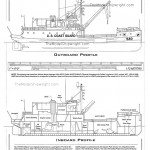
Coast Guard Vessels
We offer plans of U.S. Coast Guard vessels ranging from early sailing cutters of the revenue service to modern motor vessels such as the buoy tender White Sumac.
Ships whose primary purpose is warfare are cross referenced on this page, whether motor, sail, or oar-powered vessels
Cargo Ships
Ships whose primary purpose is cargo transport are cross referenced on this page, whether motor, sail, or oar-powered vessels
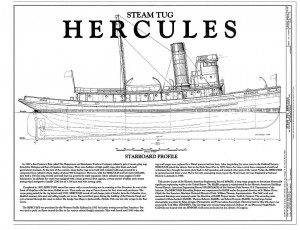
Utility Vessels
Ships whose primary purpose is to serve the maritime industry, such as pilot vessels, tugboats, or lighters are cross referenced on this page, whether motor, sail, or oar-powered vessels
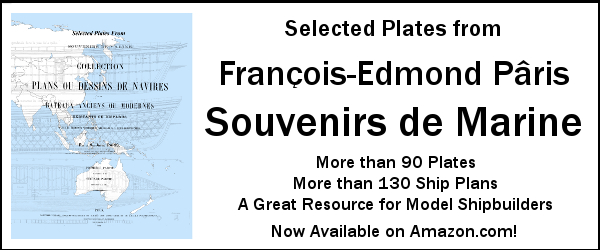
14 comments
How detailed are your plans? Can you email me one page showing it?
You can download the plans directly from the website. Go to the page of plans you want, and left-click on the plan image to open the image file. Then right-click on the image and choose “save image as” to download it to your computer. The plans can be opened with any image-editing or preview software. Save it to a removable drive and you can take the drive to a local copy shop to be printed on their large-format printer.
Do you accept donated paper plans? I may thin out my collection.
Send us a message on our contact page, we’re always looking for submissions!
WAGB -10 or WAGB-11 Looking for plans. Can anyone help? Thx
I have a set of some 200+ plans for WAGB-10, what are you looking for?
I am looking for drawings of below main deck layouts of 1700-1800 “Man of War” ships. Do you have any?
Check out our page on the French Man of War Montebello It has several views of the below decks.
does anyone know where I could get plans for a VLCC oil tanker /?
I have some GA plans for some tankers, what are you looking for?
I am looking for the typical or average hull ratios: beam/lenght, beam/keel, beam/depth, beam/draught, tonnage, displacement, and burthen of the various types of Ships during the age of sail. Any recomendations?
One of the best experts on the subject was Howard Chapelle. He probably answers the question in one of his many books on sailing ships. https://en.m.wikipedia.org/wiki/Howard_I._Chapelle
[…] Ship Plans […]
Anyone know of a source for plans for the Steamer Eastland, that capsized in the Chicago River in 1915?
Leave a Reply Cancel reply
Model Boat Hull Construction
The carved block method, part one. model boat hull construction made easy – a step-by-step instruction how to build a wooden boat model hull from a solid block. the method described is common for ship model kits and scratch building..
Building a model boat hull using the carved solid block method can seem intimidating at first. It shouldn’t be though - if being methodical there is no reason a first attempt will not turn out as good as any.
The carved block model boat hull construction is best used for:
- Static ship models - up to 600mm (24 inches) long
- Making a pattern for resin or fiberglass hulls
- Making ship's boats ("life boats")
This method has disadvantages, such as:
- Hulls may crack - The risk is increased with large cross sections and the use of inproperly seasoned lumber.
- Limited use if natural wood finish is desired. This would require planking after the carving process is completed.
You'll need:
- A hull plan in the right scale with deck plan, profile and cross sections. It helps if the stations (where the cross sections are located along the hull) are marked on the other two views.
- A piece of wood as described below.
- Hand Tools: Carving tools, files, sandpaper. Hand plane if you are prepping your own wood block. A hand saw* of some kind to roughly shape the ends of the wood block.
- Drafting tools: Pencil, square and scale.
- Also helpful tools: A bandsaw is a good help, but not essential. *If you have access to one, you won't need the hand saw above.
Step 1: Select Model Boat Hull Material
Most model ship hulls built with this methods are made from either mahogany or basswood (linden in Europe), but there are many other suitable wood species, such as poplar and alder. For beginners, I’d recommend basswood or poplar because they are easy to carve and inexpensive.
For experienced woodworkers there is no reason cherry or walnut could not be used. If you have a favorite wood or a perfect scrap piece, you may as well use it.
The type of wood can always be negotiated as long as it is stable . I find it more important to select properly seasoned lumber, free of knots and pitch pockets.
Lumber I wouldn't use include oak, American beech, birch, hard maple, and exotic species like rosewood, teak, purpleheart and bloodwood. These species are hard to work with hand tools and dull edges quickly when carving.
This method is best used for models under two feet in length and under 6-8 inches wide. This off course is a loose rule that will vary with ship type etc. If you want to go bigger, consider the bread-and-butter method (also known as the laminated method) for saving in material and weight.
Step 2: Preparing the Wooden Block
Make sure the block is squared up, i.e. the long sides are square and parallel to each other and that the block is a quarter to half an inch longer than the finished hull (6-12mm).
With a pencil, mark a centerline down the middle of the block. An alternative way to achieve this is by gluing up two boards where the joint will become the center line. This works great as long as the boards are straight, without twist and properly surfaced before gluing.
Step 3: Mark the Stations, Profile and Deck outline
With a square to guide you, measure out and mark the stations. Photocopy or trace out the profile and deck outline onto separate pieces of paper. Cut them out with scissors to form templates.
Line up the deck template symmetrically on the centerline and align with the stations. Trace the deck outline with a pencil onto the block. Follow the same method for the profile template.
Step 4: Cut out Profile and Deck outline
A band saw will make your life a lot easier in this step, but are not essential. Begin by cutting out the profile. Then cut the deck outline.
Then cut the deck outline. Notice how the stations you so carefully marked got cut away. Use the square and pencil them in again.
Step 5: Make Station Templates
These are best made by photocopying or printing out the body sections onto card stock and then carefully cutting out with an X-acto knife.
Be sure to mark the water line and deck line. By making the template upper edge level with the deck line, you'll kill two birds with one stone. It’s also a good idea to put the station number on each so you can identify them easier.
Continue the Article Series Below
Part Two - shaping the hull and deck
Part Three - fitting keel, stem, sternpost and rudder
Part Four - planking the deck and fitting gunwales
Return from Carved Model Boat Hull to Hull Design
Return to Homepage
Would you prefer to share this page with others by linking to it?
- Click on the HTML link code below.
- Copy and paste it, adding a note of your own, into your blog, a Web page, forums, a blog comment, your Facebook account, or anywhere that someone would find this page valuable.
- Plans Store
- Model Boat Books
- Model Boats Intro
- Building Materials
- Make a Hull
- Plastic Kits
Radio Control
- US Battleships
- Torpedo Boats
- Model Boats Q&A
- Model Ship Gallery
- What's New?
- Privacy Policy

By Petter Blix
Copyright 2009-2018 Building-Model-Boats.com
Trademarks belong to their respective owners
All Rights Reserved
- Basket (USD $0) Checkout
Shop By Difficulty Level
Beginner's kit, advanced beg. kit, intermediate kit, shop by model boat kit category.


Any Other Type

Barge, Trawlers and Tug Boat Model Kits

Best Selling Model Kits
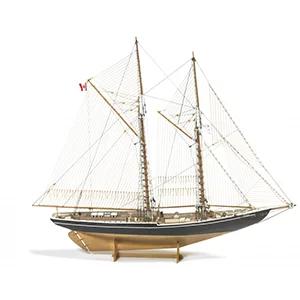
Classic Boat & Yacht Model Kits
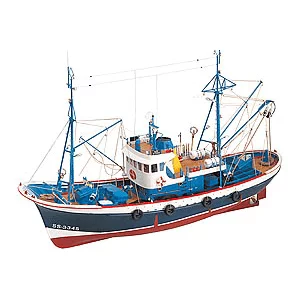
Fishing Vessel Model Kits
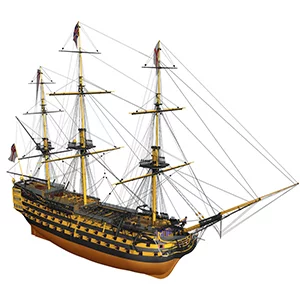
Historical & Tall Ship Model Kits
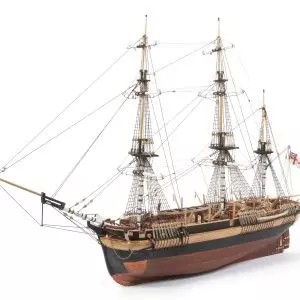
In Stock Kits
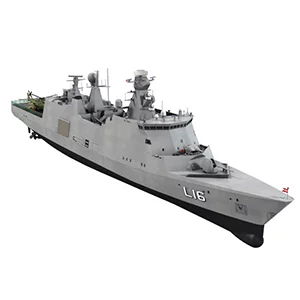
Modern Military Model Kits
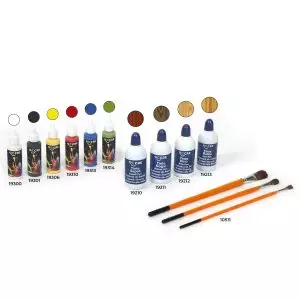
Passenger Boats and Liners Model Kits
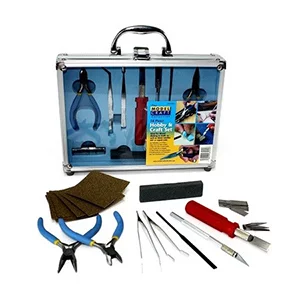
Model Making Tools & Modeling Kits
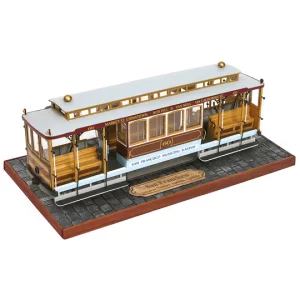
Tram Model Kits
Click here for all model boat kits.

Model Boat Kits
For some of our clients, they gain greater satisfaction in actually building their own ships, yachts and sailboats rather than purchasing a ready-made ship model. Premier Ship Models caters for both collectors of ready–made models and the avid hobbyist who prefer to make their own by providing the services and relevant products to satisfy all of their needs.
There is an extensive range of kits on offer of tall ship building kits and wooden yacht model kits; furthermore, there are different levels of difficulty to choose from to ensure that you pick the right one for you. There are many reasons why someone would want to build their own model. From the feedback that we have received, it seems to be purely for the satisfaction of making something with your own hands that you can be proud of.
Our collection includes sail boats, tall ship building kits, scale model boat kits, historical ships, and wooden yacht model kits. In addition, we will try and source kits for you if you are unable to find a specific one that you are looking for. We have about 200 model kits on offer and all of them are wooden ship model kits. The ship model kits that we offer have been carefully selected to ensure that they are of the finest quality, using the best quality woods and materials.
As a result we have model makers coming back to us with positive feedback where they have been pleased with the quality of our sailboats, yachts and tall ship building kits. As mentioned above we sell kits from the best manufacturers of quality model kits. They are, Artesania, Amerang, Billings, Aeronaut, Amati and Mantua to name but a few. The types of models are; classic, historic, modern ships and wooden yacht model kits and these tend to be vessels from history, stories, and classic yachts, including HMS Unicorn, HMS Victory,La Sirene, Le Mirage, Reale De France and many others.
Over the years, we have found that one of our best-selling and most popular model ship kits is the Scotland Baltic yacht model kit. This particular wooden kit is provided by an Italian manufacturer, Corel S.R.L., famous for making wooden kits over 40 years. Another popular wooden ship model kit by Corel S.R.L. is the HMS Bellona, a famous 74 gun classic British Navy ship.
One of the most elegant ship model kits in our product range is the Blue Nose 11 model ship a great focal point in any room or office. For those of you who are more experienced kit builders, Smit Rotterdam model boat kit is a great choice. This model ship kit is built with bulb stern nozzle and the onboard equipment includes a very modern for component for navigation, steering and radio communication.
Another possibility for a more advanced kit builder is the HMS Bounty model ship kit with laser cut parts. Purchasing a boat model kit online could not be simpler! Our easy and friendly online store makes purchasing sailing boat models, tall ship building kits and wooden yacht model kits easy and convenient.
To make your shopping easier, we have classified our kits according to the manufacturer and level of difficulty (Beginner, Intermediate and Advanced). Kits can be shipped out to you worldwide. Please see our customer testimonials for all those satisfied customers who have purchased from us from 81 countries around the world so far and counting.
At Premier Ship Models, we cater to the unique preferences of every collector. We offer a large selection of ready-made ship models and model ship kits for those who prefer to build their own models. If you find building models relaxing or relish the satisfaction of building something with your own hands, we offer intricate boat and ship models that you would be proud to display in your home.
At Premier Ship Models, we have an expansive selection that includes more than 200 wooden model boat kits. We feature model kits from the best known brands in the industry. We showcase only the best products with the best quality woods and materials to ensure a pleasant experience for novice and experienced model builders alike. Choose ship kits from Artesania, Aeronaut, Billings, Amati, Mantua, and other well-known and respected brands.
Models for Every Skill Level & Interest
Do you love a certain type of ship or time period in military or nautical history? Our inventory includes ship model kits of classic, historic, and modern ships. You will find model kits for all types of vessels, including tall ships, wooden yachts, historical ships, sail boats, scale model boat kits, and more. Whether you are looking for a model from a specific time period, type of ship, or modern boats, you will find it here.
Always select a model that is appropriate for the level of skill and experience of the person building it. A kit that is too easy or too difficult will detract from the enjoyment of the activity. We have model sailboat kits for every level of difficulty to satisfy beginners as well as more advanced hobbyists. Read the product description of each kit to learn more about each ship, including the materials included in the kit, photographs, and level of difficulty to make sure that the ship is right for you.
Some model boat enthusiasts take the hobby to the next level with radio controlled boats. We offer prebuilt models and RC boat kits for large RC boats, scale boats, gas powered boats, PC hull boats, race and speed boats. RC boat models are used for recreation or competitive racing, depending on the interests of the individual. Browse through our website to find wooden model ships, sailboats, historic ships, and modern ship model kits that are suited for beginner, intermediate, and advanced model building. We offer fast order processing and worldwide shipping.
Information
- Delivery & Packaging

- Cookie Consent
- Secure Payment
- Legal Notice
- Terms & Conditions

Follow us to keep up-to-date using our social networks
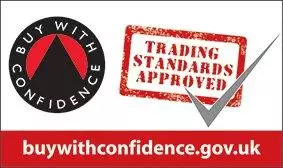
Enter your email address to sign up to our newsletter to keep up-to-date.


Welcome to the World of Model Yachting
Welcome aboard.
This site is primarily intended to help those building a one off IOM (International One Metre) or a similar radio controlled model yacht. Essentially the hull and decks can either by built in Glass / Epoxy throughout, or in Wood - typically Cedar or Balsa (balsa needs glass sheathing), and with a very thin ply deck.
Where you are intending to build a few similar boats, for example a group of you want to build the same design, a female mould of some form should be made. This is not dealt with here.

Model Yachting
Model yacht building workshop.
When: July 8 – 12, 2024
Time: 9:00 AM – 3:00 PM
During this weeklong workshop, you will learn how to construct your model sailboat in a friendly, stress-free, and fun environment. Our expert boat builders will guide you each step of the way. No experience with woodworking tools is necessary. Students ages 10-14 are welcome when accompanied by an adult.
The model kit for the 2024 workshop is the Soling 1 Meter Yacht. The Back Bay Skippers will supply all the parts you need including the sails. Please note that paint and radio kits are not included with the kit. There is an optional radio kit that can be purchased through registering for the workshop and builders can add their own unique, creative design elements by choosing a personal color-scheme and providing paints.
This is a very popular workshop so please register early for the 2024 Model Yacht Building Workshop. Registration is open.
Soling 1 Meter Model Yacht
Register Now

Give this class as a gift to a loved one or friend!
If you would like to gift the Model Yacht Building Workshop to someone special please contact [email protected] .
- Join Newsletter & Get 10% Off Your First Order

Join / Login
Yachts model ship kits & model boats kits.
We have a large range of Yacht model ship kits complete with English instructions and all fittings, making for great yacht model kits. If you are interested in building a ship model kit yacht make sure to have a look at our great range of kits. We offer model kit yachts to build that have featured at the Olympic games, sailed in Americas Cup and more. All yachts offer an elegant reminder of yesteryear.
Filter Products
Skill level.
Showing all 11 results
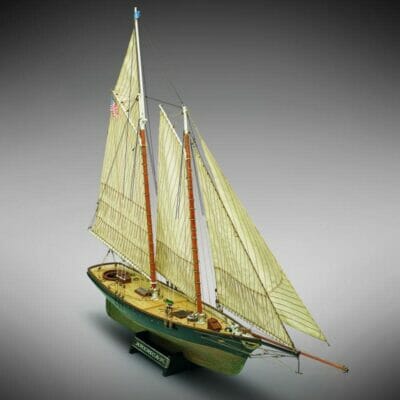
Yacht America – Schooner 1851
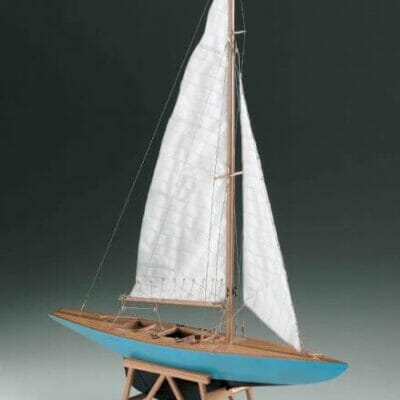
5,5 YACHT – International Class
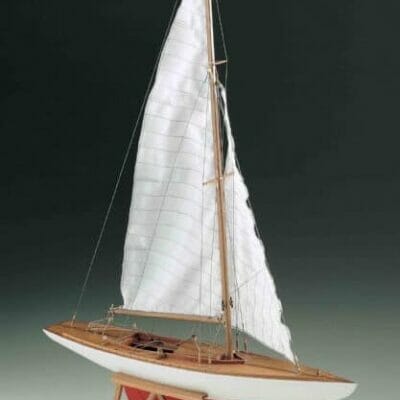
DRAGON CLASS YACHT – International Class
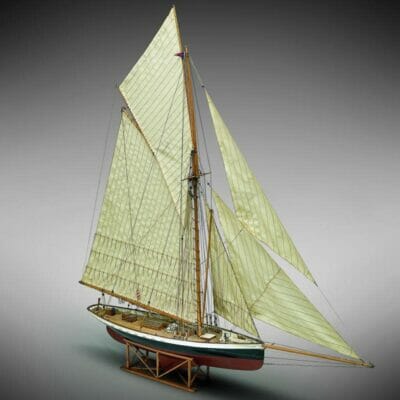
PURITAN – American Sloop 1885
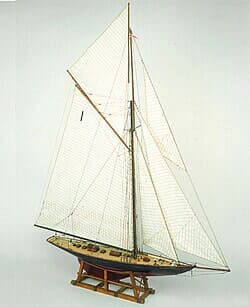
BRITANNIA – Racing Yacht 1893
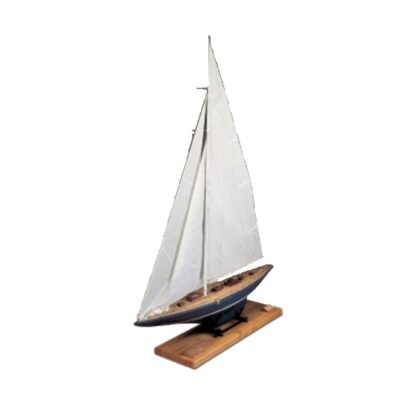
ENDEAVOUR – J Class America’s Cup 1934 – 1:35
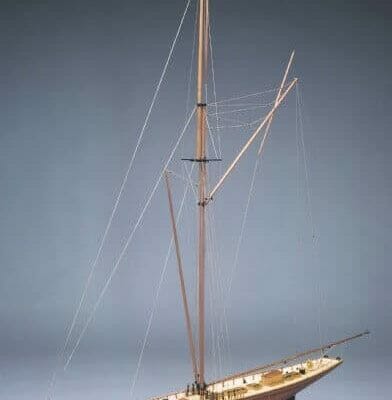
BRITTANIA – Racing Yacht 1893
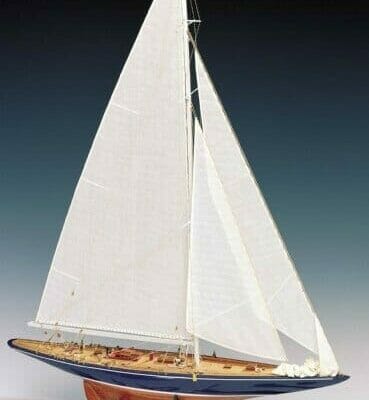
ENDEAVOUR – America’s Cup Challanger 1934
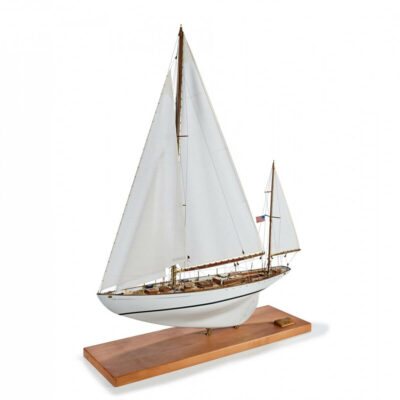
DORADE – Fastnet Yacht 1931
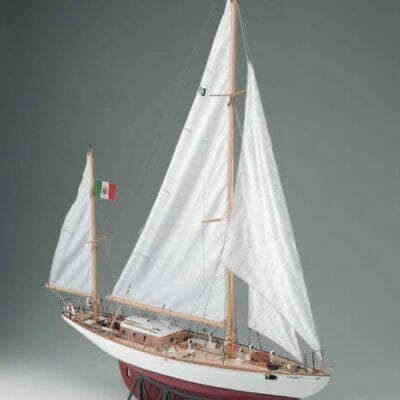
CORSARO II – High Sea Regatta Yacht 1961
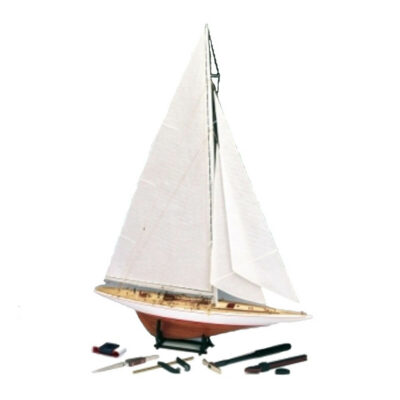
RAINBOW – J Class America’s Cup 1934
Related articles.
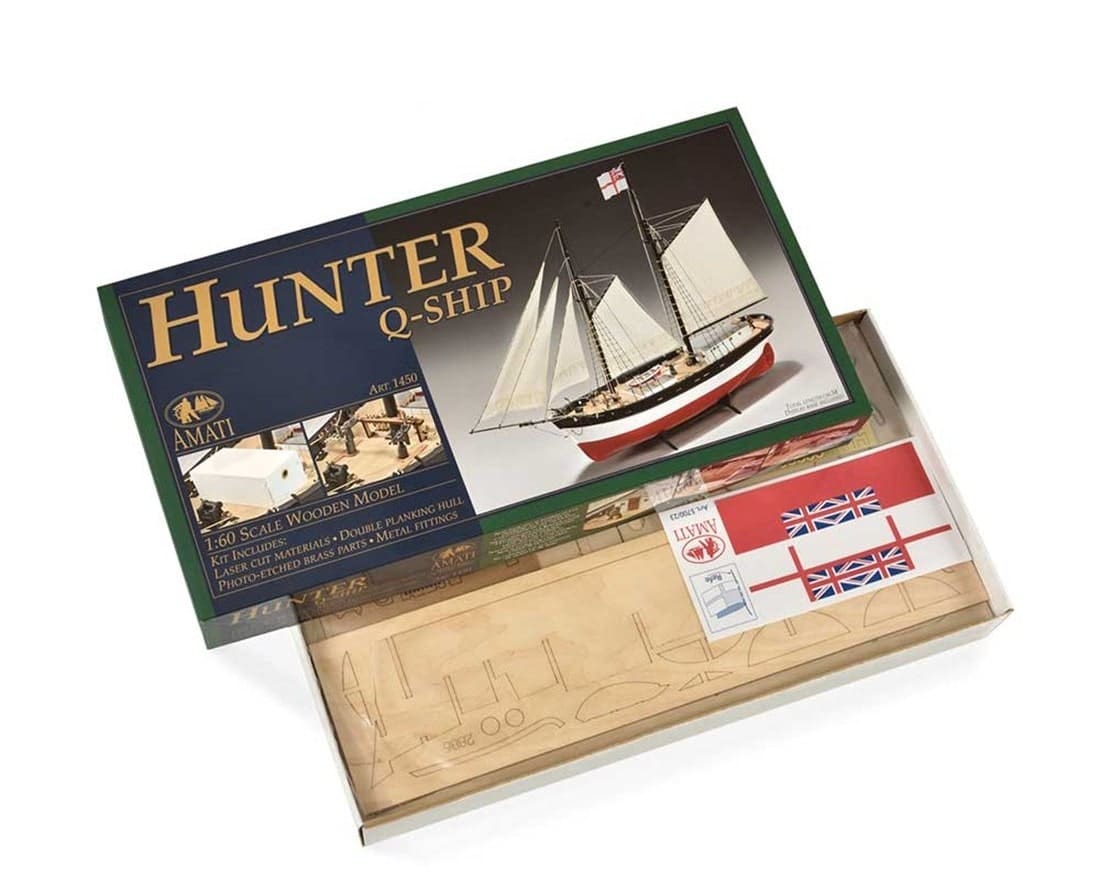
7 Tips For Choosing A Wooden Model Ship Kit
When choosing a wooden model ship kit there are a number of factors that need to be considered. Your overall decision on these factors will influence your selection of a particular wooden ship model kit to build.
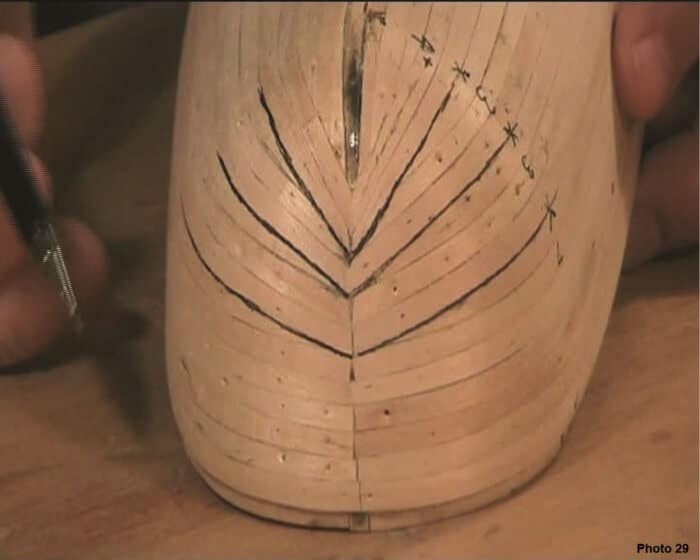
How to Plank The Hull of a Bluff Bow Ship Model
Learn How To Plank The Hull of a Bluff Bowed Wooden Model Ship with this Comprehensive 40 Step Build Guide From Modelers Central.
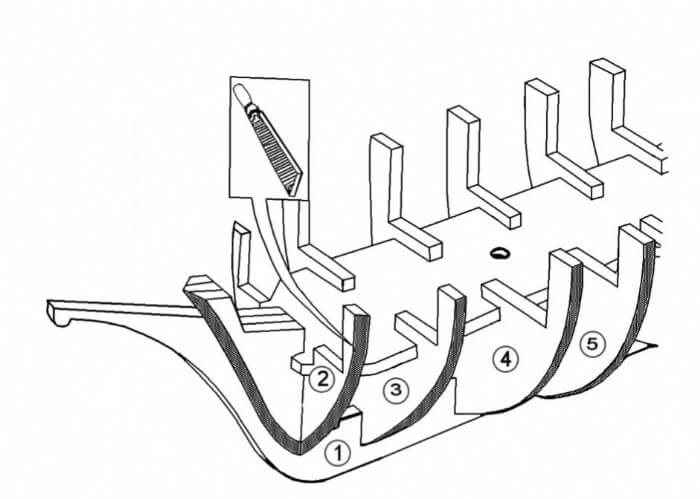
Planking Tips For Building A Model Ship
Most beginners to model Ship Building have some concerns regarding planking, however, provided that some serious thought is given to the subject so that the principles are clearly understood, then it should not prove overly difficult.
Join 18,543 other modelers to hear about specials, new products and modeling tips
- Become a Member
- Modeling Hub
- Model Ship Building
- Maritime History
- Affiliate Program
Information
- Terms & Conditions
- Privacy Policy
Copyright © 2023 Modelers Central. ABN: 31 114 830 732
- Claim 10% Off First Order
- Get 5% off ALL orders with a Membership
- Gift Vouchers
- Help & Advice
Modelers Central. 2023, All rights reserved.

- Claim 10% Off Your First Order
- Get 5% Off All Orders With A Membership

Get 10% off
Your first order.
10% off applies only to full-price items. By providing your email address, you agree to our Terms & Privacy Policy

10% off applies only to full-price items. By providing your email address & mobile number, you agree to our Terms & Privacy Policy and consent to receive marketing messages from Modelers Central at the addresses provided. You can unsubscribe at any time by replying STOP.
Advertisement
Engineers Raise Questions About Bridge’s Construction as Inquiry Begins
In reviewing images of the Francis Scott Key Bridge, some structural engineers said that its piers, which are essential to the structure’s integrity, appeared to lack protective barriers.
- Share full article

By James Glanz and Annie Correal
- March 26, 2024
The large container ship that collided with the Key Bridge in Baltimore, leading to its near-total collapse, appeared to strike a critical component, known as a pylon or pier, according to several engineers who have reviewed footage of the incident.
Without the pier, they said, it was impossible for other components of the bridge to assume the load and keep the bridge standing.
The piers on a bridge act as a kind of leg and are what is known as “nonredundant” parts of a bridge’s structure. If a pier is somehow taken out, there is nothing to compensate for the missing structural support, and a collapse of the bridge is all but inevitable, most of the analysts said.

How Fenders Might Have Protected Against Bridge Collapse
The Francis Scott Key Bridge did not have an obvious fender system, or protective barriers, to redirect or prevent a ship from crashing into the bridge piers.
Yet the collapse in Baltimore on Tuesday might have been avoided, some of the engineers said, if the piers had been better able to block, deflect or withstand such a collision. And some of the engineers questioned whether the bridge’s piers had adequate blocking devices that are known with a self-explanatory name: fenders.
In bridge engineering, fenders can be anything from simple pyramids of rocks piled around the pylons to major concrete rings padded with slats of wood, designed to shield the bridge’s supports from damage by water or collisions.
It was not clear whether any such protection built around the bridge’s piers was sufficient to guard against even a glancing hit from a 95,000-gross-ton container vessel.
And the U.S. secretary of transportation, Pete Buttigieg, expressed doubt on Tuesday that any bridge could have withstood such a serious collision.
“This is a unique circumstance. I do not know of a bridge that has been constructed to withstand a direct impact from a vessel of this size,” he told reporters.
Yet a different perspective emerged in initial comments by the investigators who will be sorting out what happened in the collapse.
Jennifer Homendy, the chair of the National Transportation Safety Board, said protective structures would be a part of the investigation into the collapse. “There’s some questions about the structure of the bridge — protective structure around the bridge or around the piers to make sure there isn’t a collapse,” she said, responding to a reporter’s question.
“We are aware of what a structure should have. Part of our investigation will be how was this bridge constructed? It will look at the structure itself. Should there be any sort of safety improvements? All of that will be part of our investigation.”
The Maryland Transportation Authority did not immediately respond to a request for comment on the design of the piers in Baltimore, and did not say whether any fenders were installed to protect them.
Between 1960 and 2015, there were 35 major bridge collapses worldwide because of ship or barge collisions, resulting in the deaths of 342 people, according to a 2018 report from the World Association for Waterborne Transport Infrastructure, a scientific and technical organization.
The deadliest crash took place in 1983, when a passenger ship collided with a railroad bridge on the Volga River in Russia, killing 176 people, according to the report.
It was only after “a marked increase in the frequency and severity of vessel collisions with bridges” that attempts to study and address the risks were initiated in the 1980s, said the report’s authors, Michael Knott and Mikele Winters.
A widely circulated video of the Key Bridge failure drew attention to the disastrous collapse of the upper bridge structure. But engineers who reviewed the footage said that did not appear to be the culprit in the disaster. Instead, they said, the superstructure failure was most likely a secondary effect of the pier crumbling beneath it after the collision.
Engineers who reviewed images of the bridge both before and after the collapse said no significant fender structures were visible. Only fairly small structures were visible in photos taken at the foot of the pier, and they did not appear to be substantial enough to be able to stop a large ship, some of them said. They said the structures may have served another purpose entirely — like preventing water from scouring and undermining the pier’s foundation.
Benjamin W. Schafer, a professor of engineering at Johns Hopkins University, said, after looking at images of the bridge taken before the disaster, “If you zoom further out, you can see these large cylinders that sort of define the shipping channel. They are to direct the ships and they are part of the bridge structure. Some would say those are protective structures. But I haven’t seen any evidence of fenders myself.”
In some bridges, engineers may elect, instead of fendering, “the alternative of making the pier exceptionally strong,” said Shankar Nair, a structural engineer with over half a century of experience who is a member of the National Academy of Engineering. But the visual evidence so far, he and others said, suggested that the pier was simply not strong enough to survive the collision.
The structure’s apparent vulnerability left some engineers dumbfounded.
“This is a huge shock,” Dr. Nair said. “A bridge of that size and importance should not collapse when hit by an errant vessel.”
The importance of sturdy fenders on bridge piers was backed up by a similar accident that occurred in 2013 when a 752-foot-long tanker collided with a support of the San Francisco-Oakland Bay Bridge. According to a National Transportation Safety Board report on the incident, the support stood — although $1.4 million in damage was done to the fendering system, which cushioned the impact.
In other cases when collisions lead to full or partial collapses, shortcomings in the fendering system are usually involved, said Matthys Levy, a longtime structural engineer and co-author of “Why Buildings Fall Down.”
“It’s usually an issue of fendering,” Mr. Levy said. “The fendering is not strong enough.”
According to a description of the Key Bridge by an American Society of Civil Engineers manual, the 8,636-foot-long structure in Baltimore was opened to traffic in 1977. The steel span above it, a design known as a truss, can be vulnerable to failure itself — damage to individual elements of the truss can theoretically cascade into a wider collapse. But that did not appear to be the case in Baltimore, engineers who reviewed the footage said: The truss, they said, was simply unable to remain intact when the pier was taken out beneath it.
Tuesday’s collapse raises the question “of how vulnerable are the piers and what is done or should have been done to protect them in the event of something like this,” said Donald O. Dusenberry, a consulting engineer who has investigated many bridge failures.
Mr. Dusenberry, in pointing to the issue of fender protection, said that it was impossible to make a full determination of what was installed without reviewing structural drawings of the bridge.
But images taken before the disaster, he said, suggested that small barriers that could be seen rising around the bridge’s piers, roughly at water level, would be unlikely to be able to stop a large ship. Effective fenders, he said, had to be far enough from the pier to keep the bow of a large ship from striking the pier, and large enough to absorb the energy of a collision. Assuming nothing had changed since the prior pictures were taken, he said, the visible structures did not seem up to that task.
“Maybe it would stop a ferry or something like that,” he said. “Not a massive, oceangoing cargo ship.”
One of the catastrophes prompting scrutiny of the issue of bridge collisions was the collapse of the Sunshine Skyway Bridge in Tampa, Fla., in 1980.
The structure collapsed when a cargo ship hit a pier, bringing down part of the main span and killing 35 people. Seven years later, a shrimp boat hit a bumper erected on the bridge built to replace it.
While catastrophic collisions garner the most attention, vessel collision accidents with bridges are not uncommon and regularly cause damage that, according to the 2018 report, “varies from minor to significant but does not necessarily result in collapse of the structure or loss of life.”
Mr. Schafer, the professor of engineering at Johns Hopkins, said fenders were undeniably important to preventing catastrophic collisions but that the size of the vessel that hits a bridge plays a critical role.
“When people think about fenders, they’re thinking about something that is similar in scale, in size, to the supporting concrete structure itself,” Mr. Schafer said. “So, you know, if that is 30-feet across, you might think of a fender which is like 30 feet as well. Right?”
The problem, he said, comes with trying to design protection against something so large as a container ship. “Could we design something that’s big enough to divert a runaway cargo ship? Yes. Would it be of a scale that’s practical? Probably not.”
Rather than build bigger fenders, Mr. Schafer said, the key is to divert ships before they get dangerously close to the piers and fenders. “That would be the physical answer,” he said. “The better answer is to have the people and the processes in place, so it never happens .”
James Glanz is a Times international and investigative reporter covering major disasters, conflict and deadly failures of technology. More about James Glanz
Annie Correal reports from the U.S. and Latin America for The Times. More about Annie Correal

IMAGES
VIDEO
COMMENTS
Model yacht building is a wonderful hobby for boaters who like the many different designs available for full scale yachts that can be made by several techniques. I started carving models of my ideas of boats at the tender age of 9 or 10. With a drawn knife, auger and bits, hammer and chisel, I made beautiful hull shapes emerge out of blocks of soft white pine.
Little by little I'm building up a small catalog of plans for download. First out is the civil war era USS Monitor and her nemesis - the CSS Virginia. As time permits, I'll add more plans. Current projects include a balsa PT 109 and a number of other model ship plans. Waiting in the wings are ironclads, pirate ships, torpedo boats, battleships ...
Adding planks will create the hull of your model boat. The first plank you place will determine how each other plank is affixed, so take your time and apply it properly, according to your model's instructions. [6] You will likely place the first plank at deck level. Planks run the length of the boat, from fore to aft.
Building a wooden model ship. Beginners guide. This part shows some of the tools you need and unboxing. Help me outhttps://www.buymeacoffee.com/jimstein
Free Downloadable High-Resolution Ship Plans Starting Point for Scratch-Built Ship Model Building. All the the plans offered on The Model Shipwright and The Model Shipwright blog are available on this site in high-resolution files. The images on the blog posting are linked directly to the page here with the downloadable files, or you can search from this page by ship type, ship name, or the ...
A working model boat is built to be run in water as its main purpose. To accomplish this, some compromises may have been made in scale detail or accuracy. There is an underlying tolerance in the model boat community for "semi scale" models as long as they are working models. In fact, most ready-made RC boats are entirely fictional.
For the most inaccessible blocks, insert a short piece of thin rigging cord through the hole and glue it to itself forming a loop. Later, when you wish to insert the permanent running rigging you cut the loop, glue the new cord to one end and pull it through the hole using the other end of the pilot cord. No awkward threading.
Work continues on the ML Boatworks kit boat build, with a few more modifications before we begin major structure assembly - SOON!Watch the whole build series...
Building a model boat hull using the carved solid block method can seem intimidating at first. It shouldn't be though - if being methodical there is no reason a first attempt will not turn out as good as any. The carved block model boat hull construction is best used for: Static ship models - up to 600mm (24 inches) long ...
The model is based on an Asa Thompson flat-bottomed skiff that WoodenBoat modified back in the 1980's. The kit is an exact 1 ½" = 1' scale replica of the full-sized boat. The parts that go into the model are identical to those in the full-sized skiff. The kit includes full-sized model boat plans and scaled-down wood (not cut to shape ...
Wooden model ship building & model boat building is a rewarding and creative hobby. Whether you're building a wooden ship model kit or model boat kit for the first time or you're an experienced modeler, you'll find a historic ship model kit here from the golden age of sailing ships that will bring you many hours of enjoyment. We have high ...
🚢 Set sail on a journey of craftsmanship and creativity with our comprehensive tutorial series on building a wooden model boat or ship! In this exciting vid...
The Electric Plank Bender is applied to the plank after soaking it in water for approximately 10 minutes. Applying the heated head of the plank bender to the wet timber and using a preshaped curved timber jig steam is produced which allows the plank to follow the curve of the jig. Very effective.
This is a quick overview of the building process that is needed to build a model J boat. Below is a list of most of the materials that were used. WOOD. 2 - 1"x8"x8' pine, aspen, bass or other suitable wood that can be cut into 5/32"x3/8" strips for hull and deck planking.
Our collection includes sail boats, tall ship building kits, scale model boat kits, historical ships, and wooden yacht model kits. In addition, we will try and source kits for you if you are unable to find a specific one that you are looking for. We have about 200 model kits on offer and all of them are wooden ship model kits.
The front and side elevations of the mast sections are identified in Figure 1. It is most important to assemble the masts and fit all eye pins and blocks before fixing the mast to the model. The location of all eye pins and blocks on the masts will be presented on the plans in the kit. Each of the parts is presented in more detail below.
Check out all the new features of our redesigned website. The AMYA was established in 1970 as a not-for-profit organization dedicated to promoting racing, designing, building, and preservation of all model sailing yachts, and membership is open to all who are interested in these activities. Our quarterly magazine is the only publication devoted ...
When I was younger my Uncle Don showed me how to build model ships the old fashion way using materials that are in most households. My Uncles father and Gran...
This site is primarily intended to help those building a one off IOM (International One Metre) or a similar radio controlled model yacht. Essentially the hull and decks can either by built in Glass / Epoxy throughout, or in Wood - typically Cedar or Balsa (balsa needs glass sheathing), and with a very thin ply deck.
When: July 8 - 12, 2024. Time: 9:00 AM - 3:00 PM. During this weeklong workshop, you will learn how to construct your model sailboat in a friendly, stress-free, and fun environment. Our expert boat builders will guide you each step of the way. No experience with woodworking tools is necessary.
Handmade. All our custom models are made by highly skilled craftsmen. Our crew has great experience in building custom boat models for Private Owners, Yacht Designers and Shipyards. Model of any vessel, from any period can be commissioned thanks to our long experience building one of a kind custom models.
We have a large range of Yacht model ship kits complete with English instructions and all fittings, making for great yacht model kits. If you are interested in building a ship model kit yacht make sure to have a look at our great range of kits. We offer model kit yachts to build that have featured at the Olympic games, sailed in Americas Cup ...
The structure collapsed when a cargo ship hit a pier, bringing down part of the main span and killing 35 people. Seven years later, a shrimp boat hit a bumper erected on the bridge built to ...